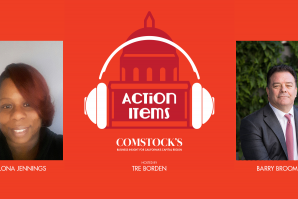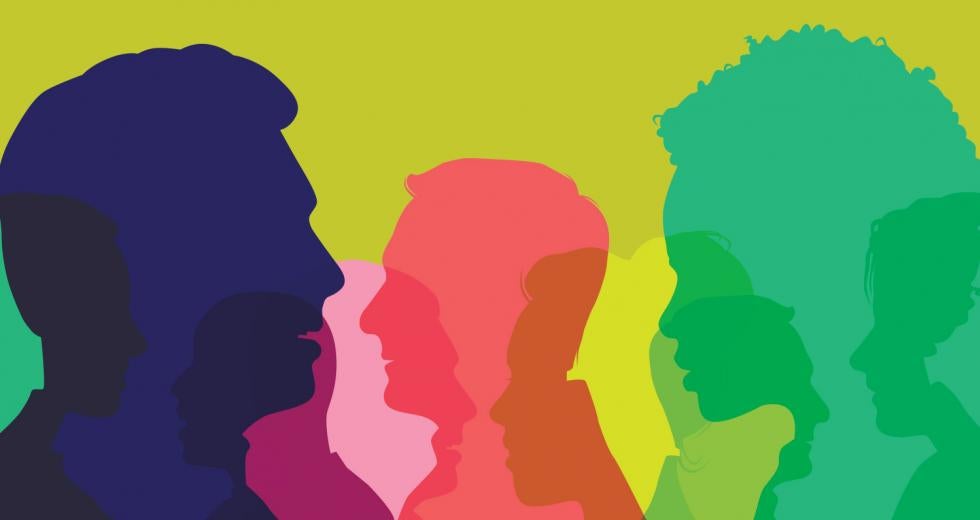“Diversity” is fast going the way of “disrupt,” “synergy,” and “lean in” — terms that once meant something but now seem destined for the business buzzword dustbin. As an empty signaler of corporate virtue, the word has gotten its fair share of criticism — for its overuse, muddled definition and frequent service as a cover for serious reform.
Yet studies continually show that companies do better with a diverse workforce. In 2015, McKinsey & Company released a report on about 350 publicly-traded companies from a range of industries in Canada, Latin America, the U.K. and the U.S. Companies in the top quartile for racial and ethnic diversity were 35 percent more likely to achieve financial returns above their industry medians. Companies in the top quartile for gender diversity were 15 percent more likely to beat their industry medians. Among U.S. companies they examined, for every 10-percent increase in racial and ethnic diversity on the senior-executive team, there was a rise in earnings of nearly 1 percent.
Related: Executive vice president at staffing company Nelson on workforce strategy
Related: Back and Forward: Rick Kempf on Workforce Challenges
Another study in 2016 by the Peterson Institute for International Economics, this one of 22,000 firms in 91 countries, found that among profitable firms, a move from no female leaders to 30-percent representation was associated with an average 15-percent increase in their net revenue margins.
Smaller-scale research suggests those results aren’t likely a product of correlation: Diversity really does appear to be associated with creativity. A 2014 Scientific American article pointed to two 2006 studies: One showed that racially diverse juries exchanged a wider array of information during deliberation; the other, conducted among university students, showed racially-diverse groups to be better at problem-solving than their all-white counterparts.
Other kinds of differences also improve performance. In a 2013 study, self-identified Democrats and Republicans read a murder mystery. Then they wrote essays on who they thought committed the crime before arguing their case to another member who disagreed with their conclusion. Individuals who knew they were meeting with someone of the opposing political party were better-prepared than those meeting with someone from the same party.
“Being with similar others leads us to think we all hold the same information and share the same perspective,” Scientific American concluded. “Diversity jolts us into cognitive action in ways that homogeneity simply does not.” It’s the reason for the effervescent mental buzz we get traveling abroad or talking to someone who works in a different industry.
That creativity effect is part of why inclusive teams and profit aren’t two sides of a coin, but more like the symbiotic relationship between bees and flowers. Leveraging this potential for stronger businesses means creating inclusive recruitment and selection processes that empower hiring managers to pick the strongest candidate while still getting around our innate leanings and biases.
LIKE SEEKS LIKE
One reason diverse businesses do better, say area human resource professionals: They reflect their customers. California’s nonwhite population makes up more than 60 percent of its total population.
“Any good business will hire a workforce that reflects its customer base,” says Steve Haas, human resources director at Disability Rights California.
Companies say diverse teams are better able to relate to customers. At Sutter Health, for example, 45 percent of patients are ethnic minorities — and 44 percent of its staff are as well.
“We need to have a diverse workforce so patients feel welcomed,” says Jill Ragsdale, senior vice president and Sutter’s chief people and culture officer.
At Sacramento-based Golden Pacific Bank, president and CEO Virginia Varela says the bank is “open to and encourages providing capital to minority- and woman-owned businesses. Those groups represent a good portion of our customer base.” The bank’s workforce reflects that — eight of the bank’s 14 managers and three-quarters of the staff are women, and a good number speak second languages like Spanish and Punjabi, says Varela: “I think that’s what makes our bank special.” Varela has turned around Golden Pacific, from losses in each of the four quarters before she arrived in November 2013 to profits in each of the latest four quarters for which data is available (through September 2017).
Inclusion increasingly matters for business-to-business sales too because clients want to be associated with companies committed to diversity — which is particularly relevant given the 121-percent growth in the number of California woman-owned businesses from 1997 to 2017, according to a report released by American Express in November. Nationally, the number of woman-owned firms is growing at 2.5 times the rate of U.S. businesses overall.
GEI Consultants is an international consulting engineering and environmental firm with an office in Rancho Cordova. The company responds to requests for bid proposals that ask for evidence the company has minority- and women-owned business enterprises in its supply chain, says Julie Jennings Kale, a senior vice president. “We need to mirror what our clients are focused on,” she says. “Diversity is both an internal desire for GEI and an inherent expectation of our clients.”
WHAT WON’T WORK
For most companies, diversity remains more dream than reality. The tech workforce, for example, is about 24-percent female, 2-percent black and 3-percent Latino, according to the Atlassian 2017 State of Diversity Report. Only 6 percent of Fortune 500 company CEOs are female, and only about 3 percent of the Fortune 500 even release any statistics on the demographics of their workforce overall, according to a Fortune investigation last June.
“Telling adults what to do can backfire. When you’re trying to tell them to do something from a ‘what’s wrong with you’ perspective, they put up walls.” Julie Jennings Kale, senior vice president, GEI Consultants
Many companies have tried to broaden hiring by using diversity training to make managers aware of bias toward or against certain types of candidates. But do diversity trainings actually help? In 2016, researchers reported in the Harvard Business Review on their analysis of diversity trainings at more than 800 companies. They found that five years after mandatory diversity trainings, representation among some women and minorities in management positions actually fell. “Telling adults what to do can backfire,” explains Jennings Kale. “When you’re trying to tell them to do something from a ‘what’s wrong with you’ perspective, they put up walls.”
Some managers and staff may support diversity initiatives but resist implementing them because of good intentions that were poorly implemented. For example, managers become resentful when they perceive diversity goals impeding their ability to staff up, says Preet Kuar, executive recruiter and business development manager at Pacific Staffing and Pacific ExecSearch. Kuar says she’s seen C-suite leaders and human resource managers leave companies out of frustration when they’ve had a position open for months and rejected qualified hires because they aren’t diversity candidates. “That kind of approach backfires on companies,” she says. It’s also a huge legal risk. Passing over qualified candidates for reasons like gender, race or religion likely violates Title VII of the Civil Rights Act of 1964 and could put a company in danger of a reverse-discrimination lawsuit. But there are better ways.
THE RECRUITMENT FIX
Traditionally, diversity initiatives open positions up to groups that have historically been excluded based on ethnicity, race and gender. But human resource experts say diversity efforts should go even broader to really bring in fresh thinking. GEI defines diversity to include education, socioeconomic background, LGBTQ orientation and other categories. “We’ve said, ‘If we’re going to do this, let’s really talk about embodying all of the different kinds of diversity,’” says Jennings Kale.
Related: Powering a Skilled Workforce
Related: Now Hiring
Related: Nonprofit Prepares Local Youth for Jobs in the Green Sector
Haas agrees that companies need a broader definition. “It isn’t just about gender and race,” he says. “It’s about communication style. It’s about socio-economic background. It’s about educational background.” He points to Nationwide Insurance’s definition as a model, which includes less-referenced diversity categories such as age, disability, veteran status, religion and differences in thinking styles, personalities and work experience.
Chandra Pappas, executive vice president at staffing company Nelson, says she manages people in their 70s and others in their 20s. “You really are getting exposed to a different viewpoint, a different way of thinking, a different way of solving problems, and they’re both correct.”
Expanding the definition of diversity may also help sell the concept to managers and staff. At GEI, Jennings Kale says she reframes conversations about diversity as: “How can we find the best and brightest by casting a wider net from a recruitment standpoint?”
But once résumés start coming in for specific positions, how do you identify diversity candidates in areas like those? Haas says that HR teams can use the voluntary equal opportunity forms that are attached to job applications to invite candidates to share information on characteristics like race-ethnicity, disability and LGBTQ orientation.
As for recruitment, Jennings Kale says GEI often hires staff out of university engineering programs and is branching out to schools with diverse graduating classes. The company also sends staff back to their alma maters to do keynotes or serve as guest speakers for classes. “We don’t want to be the company that just shows up at the job fair and happens to be in the right spot at the right time to meet a candidate of diversity who’s walking down the aisle,” Jennings Kale says.
That also means doing outreach and advertising in new places — ethnic chambers and leadership groups can help. When Pappas served as senior vice president at an executive recruiting firm for accountants, she says she had her company join networks and form relationships with nonprofits that helped her target CPAs with diverse backgrounds.
Varela, of Golden Pacific Bank, pushes talented female staff to apply for management jobs. “I think sometimes women are not encouraged to take the leap forward — sometimes they’re more hesitant to be aggressive in climbing up the professional ladder,” she says.
Indeed, a report last March by professional consulting firm Pricewaterhouse Coopers on how to attract female talent concluded that among the top reasons women choose one employer over another is internal promotion — the opportunity to move up at a company. The report concluded that internal recruitment is now more important than ever.
As for the final selection process, at Disability Rights California, HR uses the equal opportunity forms to put together diverse candidate pools including at least one person of color and one with a disability. Hiring managers meet the pool but don’t get the forms. “Get the pool right and then hire the best person,” Haas says. Teams also should determine interview questions up front and decide in advance what they’re looking for. A structured process helps mitigate bias, he says.
Hiring managers can’t alone be responsible for broadening the employee pool. By the time a manager is choosing from several qualified candidates, it’s too late in the process to suddenly make diversity a priority. Bringing in new blood means investing in changing how the company looks for and selects candidates, which means rethinking the hiring process. But if the scientific and anecdotal evidence about inclusive teams is right, the payoffs are worth that investment.
Recommended For You

Action Items: Leveraging Regional Diversity
Barry Broome and Alona Jennings discuss strengthening career pathways to entice investment
On this episode of Action Items, Greater Sacramento Economic Council CEO and President Barry Broome and Code for Hood cofounder Alona Jennings join host Tre Borden to discuss the need for Sacramento to disrupt its economy by leveraging its diversity.

Stockton Plants Seeds for Job Growth
Nationally recognized program aims to bolster businesses and revenue
If you have any stake in Stockton’s economy, you know the pain of watching residents (a.k.a. super commuters) leave the city to work in the Bay Area every day of the week.



